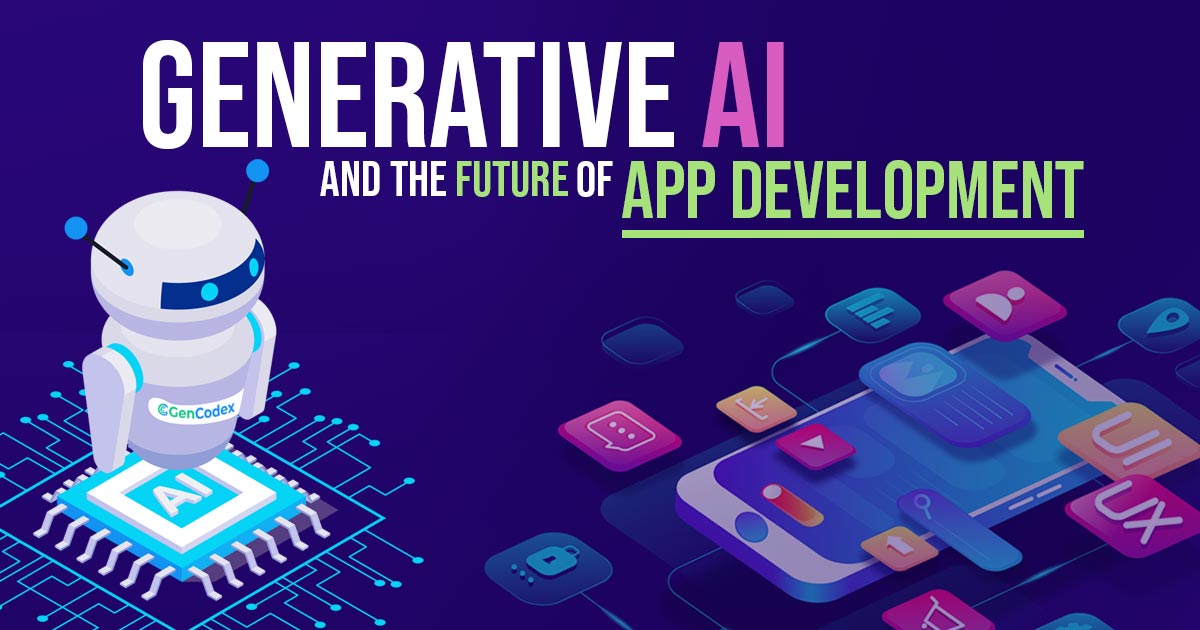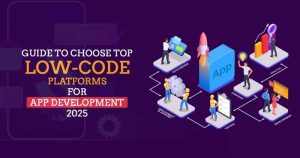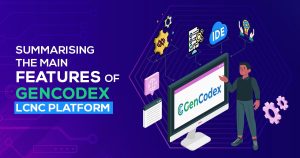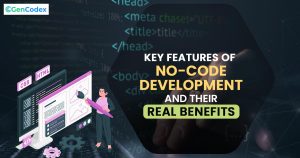Table of Contents
Software development is increasingly benefiting from new technology known as generative AI. A recent survey from GitHub, conducted with 500 developers working at large companies in the U.S., revealed that an impressive 92% are using these AI tools to assist with their coding tasks. Developers appreciate how these tools help them avoid repetitive work, learn new skills, and improve their productivity, the quality of their code, and collaboration with their teams. Globally, by the end of 2023, about 5% of software developers in businesses were using generative AI, and this number is expected to rise significantly. This trend has sparked discussions about what the future of app development will look like in the age of AI. In this section, we’ll explore what is likely to change in how applications are created and who is involved in the process.
How Generative AI Will Change the Way We Build Apps
Generative AI is making the process of creating software much simpler and faster. It helps with everything from writing code to testing how well the software works. As more tools powered by AI become available, their impact on how we manage technology will continue to grow. This means your organization’s approach to developing apps is about to undergo a significant change. Here’s what you can expect:
Evolving Skillsets
As generative AI takes over many routine programming tasks, developers are transitioning to more strategic roles. They may begin to take on responsibilities such as designing systems or finding solutions to complex problems. This shift enables developers to deliver business solutions more quickly and make important decisions. At the same time, IT professionals will need to learn about AI and machine learning to effectively use these new technologies. Although AI can handle much of the workload, it’s still essential for people to interpret and fine-tune the results.
Shifting Organizational Structures
With faster and more efficient development processes, the way IT teams are structured will change. There will be a greater focus on collaboration across different specialities, bringing together AI experts, subject matter experts, and business teams. This approach promotes a collaborative culture that centres on user needs. Companies will also need guidelines to ensure that AI is used fairly and responsibly, particularly as it becomes easier for non-technical teams to access these tools.
Related: Impact of Generative AI on Low-Code/No-Code Development
Enhanced Agility and Iterative Development
In a world powered by generative AI, IT teams will adopt more flexible and iterative methods. They will focus on quickly creating prototypes and testing ideas in real-time, fostering a culture that emphasizes experimentation and innovation. Continuous feedback will become vital for success, helping teams to refine their work constantly.
Managing AI-Powered Automation
Generative AI will automate many repetitive tasks in IT, which is just beginning to be fully understood. While this automation frees up team members to focus on more innovative and strategic projects, it will also require them to learn new skills and take on different roles to manage this automation effectively.
Ongoing Learning and Adaptation
To keep up with the advancements in generative AI, IT organizations must prioritize continuous learning. Leaders should stay updated on new tools and technologies while ensuring that their teams have access to training and development opportunities. Continuous improvement—whether in software quality, AI-generated content, or overall workflow efficiency—must be a top priority.
Ethics in the IT Sphere
The ethical considerations surrounding generative AI are now a shared responsibility, not just something for legal departments. IT teams must play an active role in developing responsible AI practices. This includes creating policies that promote fairness, transparency, and accountability for any organization using generative AI.
Ultimately, this adds up to a critical shift: IT leaders must prepare for the far-reaching impact of GenAI on software development and the broader SDLC. One key question is how this affects traditional coding practices.
GenAI and Traditional Coding
Just as GenAI is assisting people without creative backgrounds in producing amazing media with easy-to-understand prompts, it’s also helping developers create apps more quickly and easily. By using advanced models that have learned from a large number of programming resources, the use of Generative AI in software development is becoming a reality and is already in progress.
Using everyday language to create software
In the near future, instead of writing complicated code, you might just describe what you want in simple English or another language. With the help of advanced technology known as Generative AI, along with automation, a lot of the software development process could become easier. This technology can provide real-time suggestions, helpful feedback, and even fix issues on its own, making software more reliable and efficient.
So, what does this mean for traditional programming? It’s going through a big change. One prediction suggests that programming environments could transform into places where developers put together ready-made building blocks instead of creating everything from scratch.
A Revolution in Complete Visual Development
As artificial intelligence (AI) technology continues to improve, it’s starting to create entire applications or large parts of them on its own. This raises the need to make the results clear and understandable for people, so they can manage the code behind these applications. New tools will be developed to help explain what the AI produces, making the coding process less noticeable. In the future, coding might become less of a focus, as user-friendly visual interfaces take centre stage, making it easier for everyone to work with technology without diving deep into technical details.




